Useful «Neighbors»: Companion Planting for Protection and Yield |
Pleasant and beneficial neighborhood improves quality of life—not only for people but also for plants. Proper planning of mixed plantings in the garden is advantageous from every perspective.
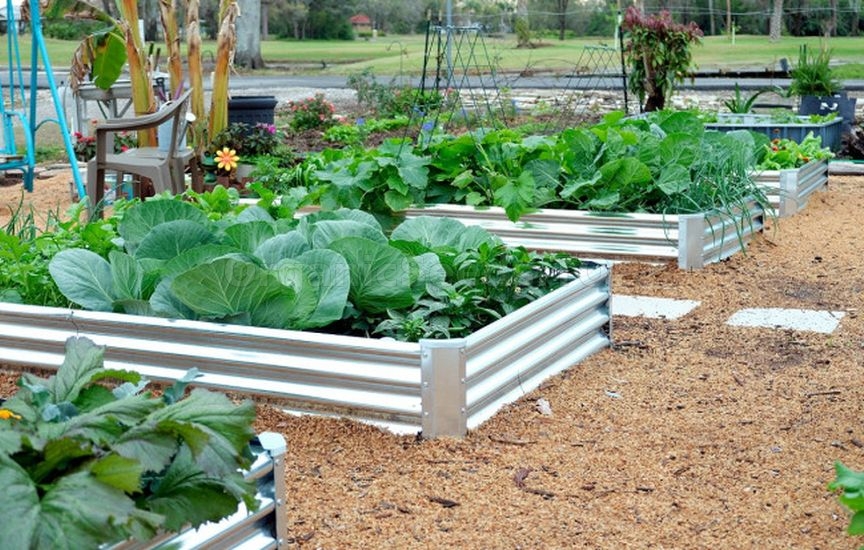 A modern garden is not just a vegetable patch and a potato field. It is also a place for relaxing with friends, a children's playground, and even a mini beach with a pool. The number of functions assigned to a garden plot is vast, so it is important to use every available meter efficiently. To prevent the vegetable garden from taking up half the plot, it is worth planning plantings rationally in advance and using intensive farming methods—such as growing vegetables together. With a well-thought-out approach, this planting method allows not only more crops to be placed in the same area but also increases the yield of each. What Are Mixed Plantings and Their Benefits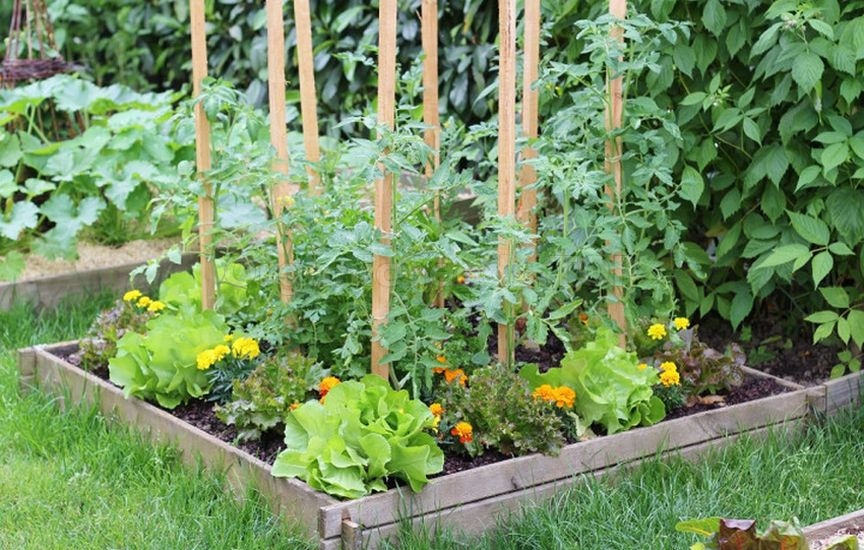 There are several approaches to organizing a vegetable garden. A standard companion planting method involves placing different crops next to each other that do not interfere with each other's development. Most cases of mixed plantings fall into this category. However, it is more reasonable to talk about intensive planting, which involves not only high plant density but also maximizing the benefits of such placement.  Dense planting of plants with different sizes, heights, and maturation periods, when done correctly, shows high efficiency. Advantages of Companion Planting:
There are no significant drawbacks to this method. The only requirement is more careful planning of fertilization, preventive treatments, and consideration of each crop’s vegetation period.
For successful cultivation of crops in mixed plantings, fertilizer application rates should be increased by approximately 50% compared to conventional methods to ensure the comfortable development of all plants. General principles of planning mixed plantings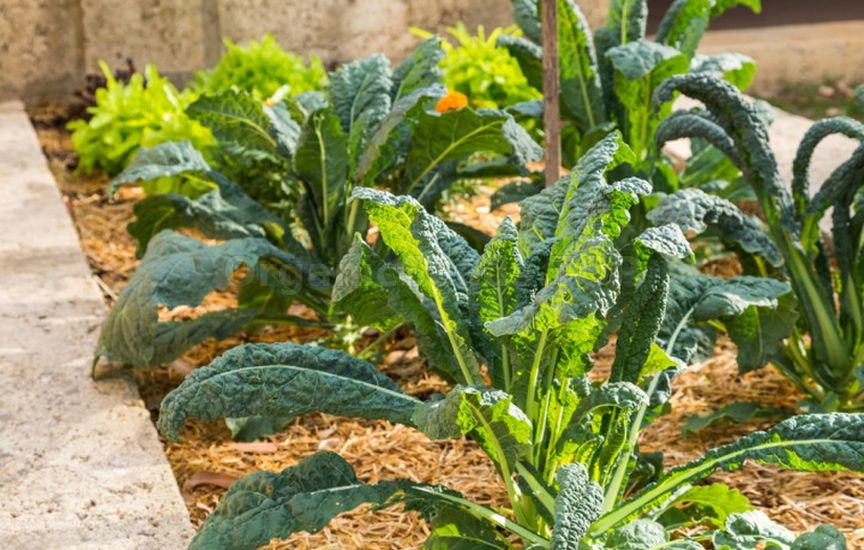 When planning mixed plantings, several key factors must be considered, as their observance will significantly increase your chances of success:
It is especially important to follow these rules when planting related crops. For example, it is not recommended to place cucumbers next to zucchini and pumpkins, as this significantly increases the likelihood of widespread transmission of common pathogens and infections. Similarly, sweet and hot peppers should not be planted together—cross-pollination may occur, and the sweet pepper harvest could be spoiled by a bitter taste.
Best Combinations of Garden CropsThe key principle of intensive mixed planting is that crops in the garden should not only coexist peacefully but also benefit one another—repelling pests, improving fruit flavor, and increasing yield.
Therefore, careful selection of "neighbors" is crucial, and it’s a good idea to record the most successful pairings each season. Below are some classic vegetable combinations that have been tested by experienced gardeners. Tomatoes and Carrots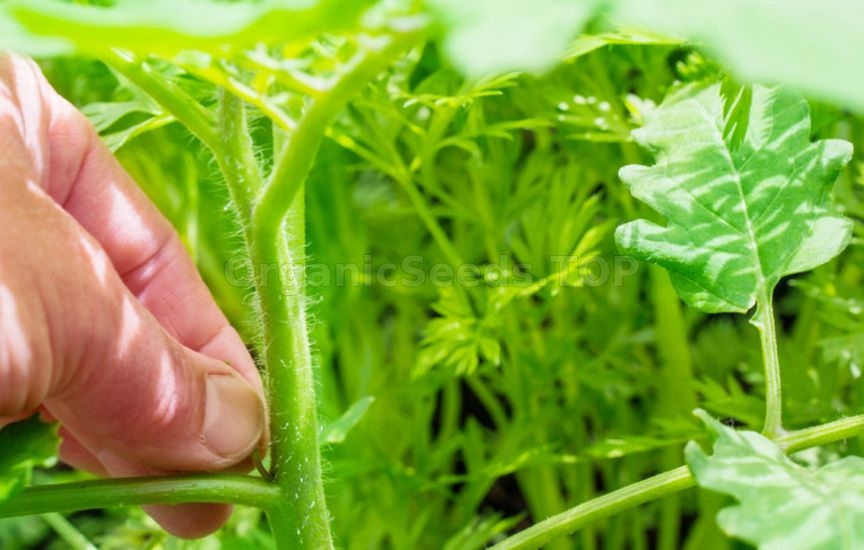 Tomatoes pair well with many vegetable crops, except for their "relatives"—such close planting is inadvisable due to the high risk of fungal disease transmission. One of the best companion plantings is tomatoes and carrots. These crops prefer similar soil composition, acidity, and density, and they do not share common diseases or pests. Additionally, they grow at different levels, meaning no competition for light or nutrients. Companion planting with carrots is most commonly practiced when growing tomatoes in open ground. To maximize yield, the garden bed should be placed in the warmest and sunniest spot. The key agricultural techniques are regular watering, timely fertilization, disease prevention, and pruning side shoots. Besides carrots, early white cabbage can be a good neighbor for tomatoes, as it is often planted at the base of tomato plants. Leafy and head lettuce, onions, and parsley also work well. However, dill and fennel should be avoided—they inhibit tomato growth. Carrots and Onions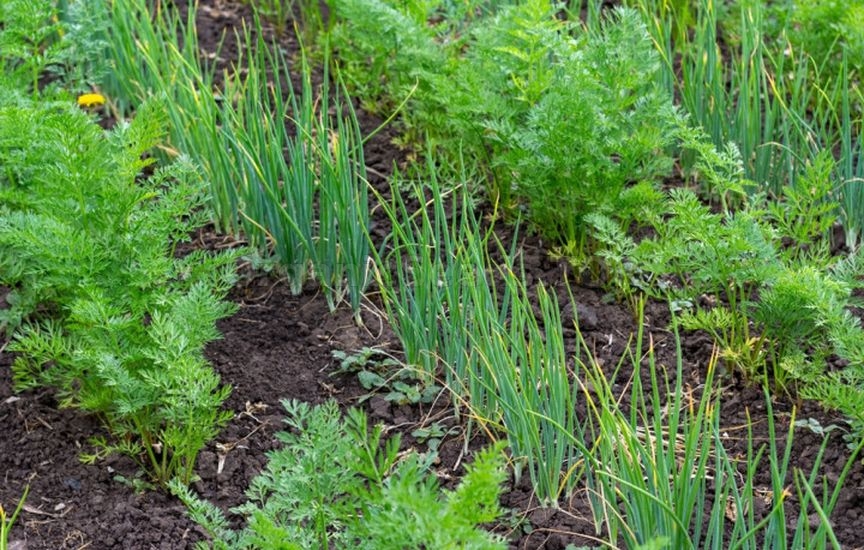 This combination is a classic seen in nearly every home garden. It’s a prime example of mutual benefit: onions protect carrots from carrot flies, while carrots help repel onion flies. However, do not plant carrots near other Umbellifer family members (dill, celery, parsley, anise). This can lead to disease and mutual suppression. Cucumbers and Dill Dill is one of the few aromatic plants that not only pairs well with cucumbers in pickling but also enhances their flavor during growth. Unlike other herbs (basil, sage, thyme), dill does not inhibit cucumber development and does not compete for nutrients. There are two methods for growing dill with cucumbers: simultaneous planting or pre-sowing (dill rows are sown before cucumber seedlings are transplanted). Dill provides double benefits to cucumber beds: its flowering umbels attract bees and ladybugs, which improve pollination and naturally protect plants from aphids. This not only enhances crop quality but also supports ecological balance in the garden.  Other good companions for cucumbers include legumes (peas, beans, lentils), beets, onions, and garlic, and leafy greens (lettuce, spinach). While leafy greens do not directly benefit cucumbers, they help retain soil moisture with their dense foliage. Celery, however, is an excellent pest deterrent. Among cruciferous vegetables, cabbage is the best match for cucumbers, as they share similar growing conditions and agricultural techniques. However, opinions on radish and turnip vary—some gardeners consider them neutral companions, while others believe they reduce cucumber yield. Peppers and Aromatic Herbs When planning pepper plantings, special attention should be given to choosing neighbors that protect against infections. The best companions are plants that release biologically active substances, which repel harmful insects and suppress pathogenic bacteria. Beneficial companion plants include aromatic herbs (basil, coriander, parsley) and ornamental flowers (marigolds, calendula), which attract beneficial insects and deter pests. Onions and garlic are particularly valuable—they take up minimal space in the greenhouse and, thanks to their strong antimicrobial properties, effectively shield peppers from fungal diseases. In a greenhouse with peppers, radish, lettuce, and spinach thrive. These plants can be grown as temporary crops (sown early and removed before pepper seedlings are transplanted) or as permanent companions—they create a protective layer on the soil surface, reducing moisture evaporation and preventing soil cracking in hot weather. Garden Strawberries and Garlic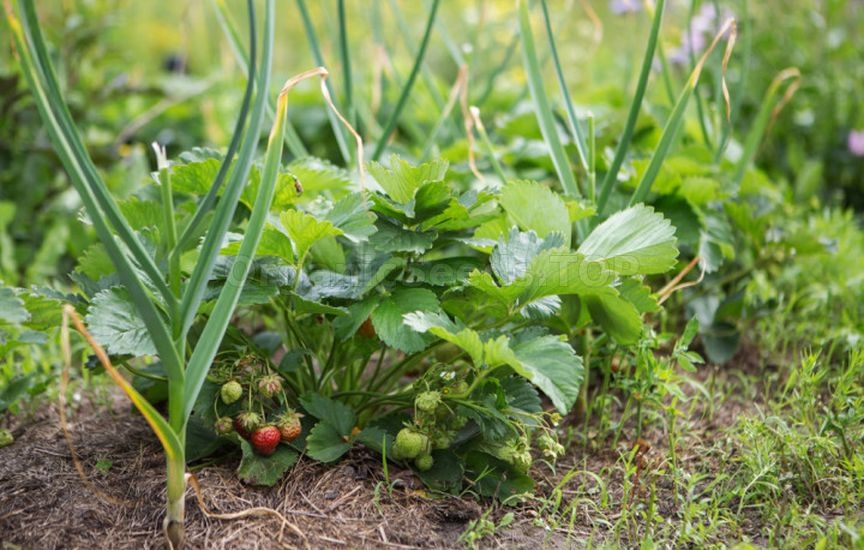 Garden strawberries adapt well to various growing conditions and can successfully coexist with many plants in vegetable beds, orchards, and flower gardens. Among the best companions for strawberries are onions and garlic, as their antimicrobial properties repel many strawberry pests. Garlic also protects strawberries from phytophthora and reduces the risk of gray mold. This not only promotes healthy strawberry growth but also optimizes space usage, boosting overall garden productivity. Other beneficial neighbors for strawberries include legumes, peas, carrots, radish, and turnips. Legumes are especially useful, as they naturally aerate the soil and enrich it with nitrogen, which supports strong strawberry growth. When growing strawberries alongside other crops, plant height must be considered—taller plants should be positioned so they do not shade strawberry bushes. You may need:Vegetable seedsFlowers seedsOrganic fertilizers |
|
|
